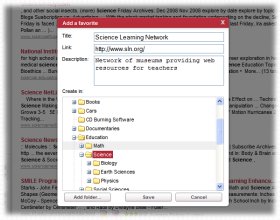|
Education
Web
Viewing 1-1 of 1 total results
and the rights of others. 6. describe factors that cause conflict and contribute to cooperation among indi- viduals and groups (e.g., playground is- sues, misunderstandings, listening skills, taking turns). 7. explore the role of technology in com- munications, transportation, information pro...
1
0
and the rights of others. 6. describe factors that cause conflict and contribute to cooperation among indi- viduals and groups (e.g., playground is- sues, misunderstandings, listening skills, taking turns). 7. explore the role of technology in com- munications, transportation, information processing or other areas as it contrib- utes to or helps resolve problems. 1. describe the purpose of government and how the powers of government are ac- quired, maintained and used. 2. identify and describe basic features
3
0
http://www.opi.mt.gov/pdf/Standards/ContStds-SocSt.pdf#page=3
www.opi.mt.gov/pdf/Standards/ContStds-SocSt.pdf#page=3
and the rights of others. 6. describe factors that cause conflict and contribute to cooperation among indi- viduals and groups (e.g., playground is- sues, misunderstandings, listening skills, taking turns). 7. explore the role of technology in <span class="highlight">com</span>- munications, transportation, information processing or other areas as it contrib- utes to or helps resolve problems. 1. describe the purpose of government and how the powers of government are ac- quired, maintained and used. 2. identify and describe basic features
4
0
http://www.opi.mt.gov/pdf/Standards/ContStds-SocSt.pdf#page=4
www.opi.mt.gov/pdf/Standards/ContStds-SocSt.pdf#page=4
—End of Grade 12 1. identify and use various representations of the Earth (e.g., maps, globes, photo- graphs, latitude and longitude, scale). 2. locate on a map or globe physical fea- tures (e.g., continents, oceans, mountain ranges, land forms) natural features (e.g., flora, fauna) and human features (e.g., cit- ies, states, national borders). 3. describe and illustrate ways in which people interact with their physical envi- ronment (e.g., land use, location of <span class="highlight">com</span>- munities, methods of construction, design
6
0
http://www.opi.mt.gov/pdf/Standards/ContStds-SocSt.pdf#page=6
www.opi.mt.gov/pdf/Standards/ContStds-SocSt.pdf#page=6
and governments). 6. analyze the influences of technological ad- vancements (e.g., machinery, internet, genet- ics) on household, state, national and global economies. 1. analyze the impact that supply and de- mand, scarcity, prices, incentives, <span class="highlight">com</span>- petition, and profits influence what is produced and distributed in various eco- nomic systems. 2. use basic economic concepts (e.g., pro- duction, distribution, consumption, market economy and command economy) to compare and contrast lo- cal, regional, national
|
